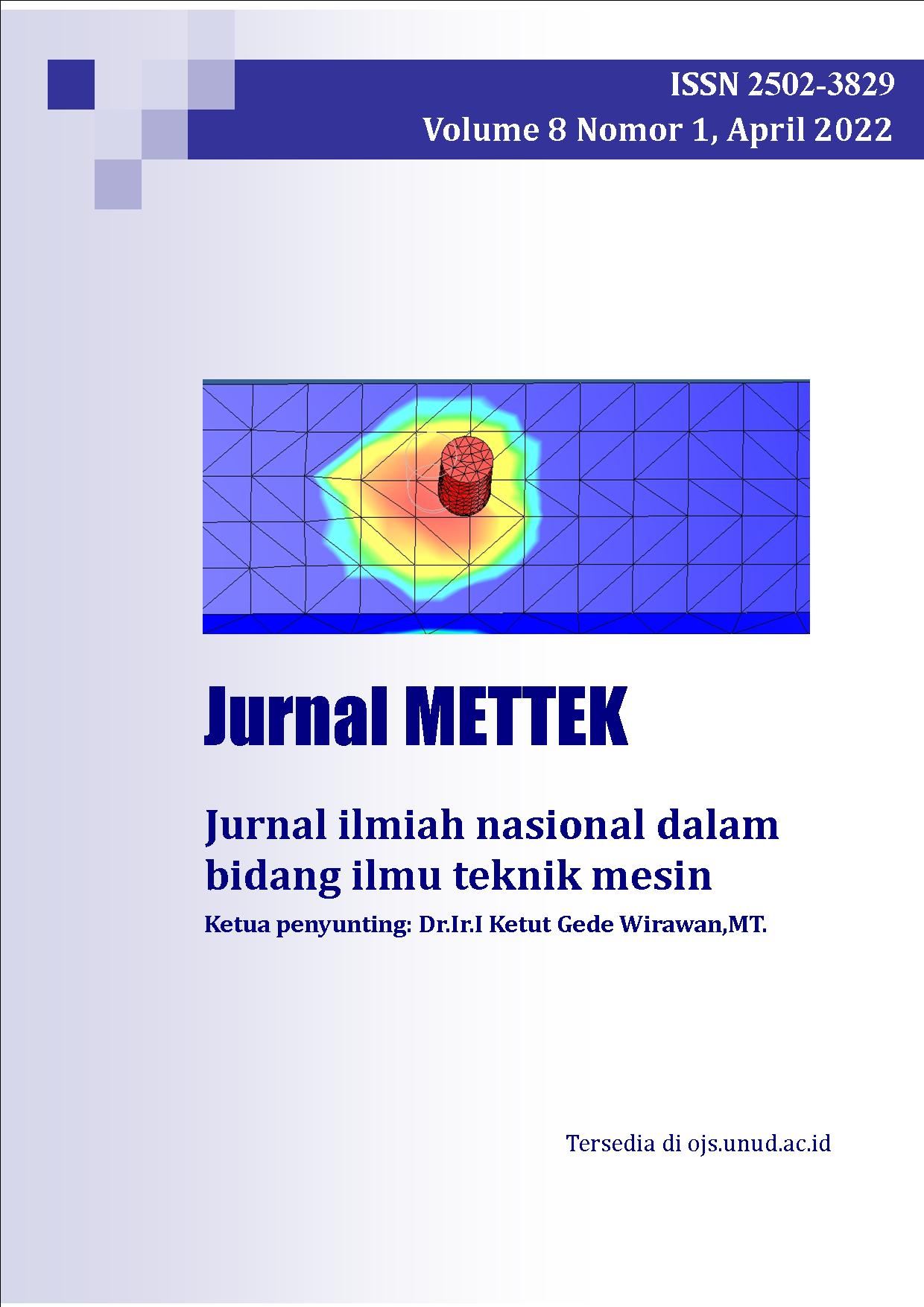Analisis Tingkat Keamanan pada Mesin Penghancur dan Penepung Sekam Padi Berskala Rumah Tangga
Abstract
Beras merupakan salah satu sumber makanan pokok bagi sebagian besar penduduk dunia, khususnya pada kawasan asia, produksi pada beras di dunia tahun 2010 sampai dengan 2011 mencapai 451 juta ton, sedangkan untuk konsumsi beras dunia sebesar 430 juta ton, dengan total stok beras di pasar dunia mencapai 95 juta ton. Tujuan dari penelitian ini adalah menganalisis komponen poros penghancur yang ada pada mesin yang akan dianalisis untuk mengetahui seberapa aman komponen poros untuk mesin penghancur yang digunakan dalam perancangan mesin penghancur padi dan penepung sekam padi berskala rumah tangga dengan material baja AISI 1020. Metode analisa yang akan digunakan dalam penelitian ini merupakan metode elemen hingga agar dapat diketahui nilai tegangan, displacement dan factor keamaan. Hasil dari simulasi tersebut didapat nilai tegangan pada kondisi satu, dua, dan tiga sebesar 6,123×105 N/m2, 7,668×105 N/m2, 9,218×105 N/m2. Displacement yang terjadi pada kondisi satu, dua, dan tiga adalah 2,630×10-4 mm, 2,673×10-4 mm, 2,736×10-4. Dimana dari hasil simulasi tersebut memiliki nilai lebih kecil dari tegangan izin material sebesar 294,8×106 N/m2, sehingga komponen tersebut dinyatakan aman.
Rice is one of the staple food sources for most of the world's population, especially in the Asian region, world rice production from 2010 to 2011 reached 451 million tons, while world rice consumption was 430 million tons, with a total stock of rice in the world market reaching 95 million tons. The purpose of this study is to analyze the components of the crusher shaft on the machine to be analyzed to find out how safe the shaft component for the crusher is used in the design of household-scale rice crushing and rice husk flouring machines with AISI 1020 steel materials. The analytical method to be used in this study is a finite element method in order to know the value of stress, displacement, and safety factor. The results of the simulation show that the stress values ??in conditions one, two, and three are 6.123×105 N/m2, 7.668×105 N/m2, 9.218×105 N/m2. The displacements that occur in conditions one, two, and three are 2,630×10-4 mm, 2,673×10-4 mm, 2,736×10-4. Wherefrom the simulation results it has a value smaller than the material permit stress of 294.8×106 N/m2 so that the component is declared safe.
Downloads

This work is licensed under a Creative Commons Attribution-NonCommercial-ShareAlike 4.0 International License.

This work is licensed under a Creative Commons Attribution-NonCommercial-ShareAlike 4.0 International License.







